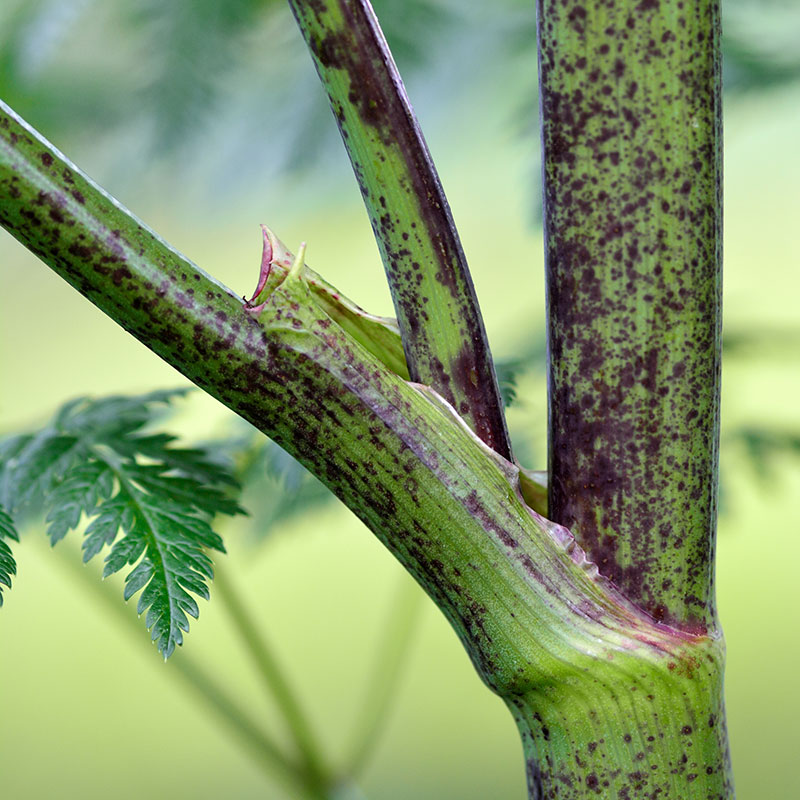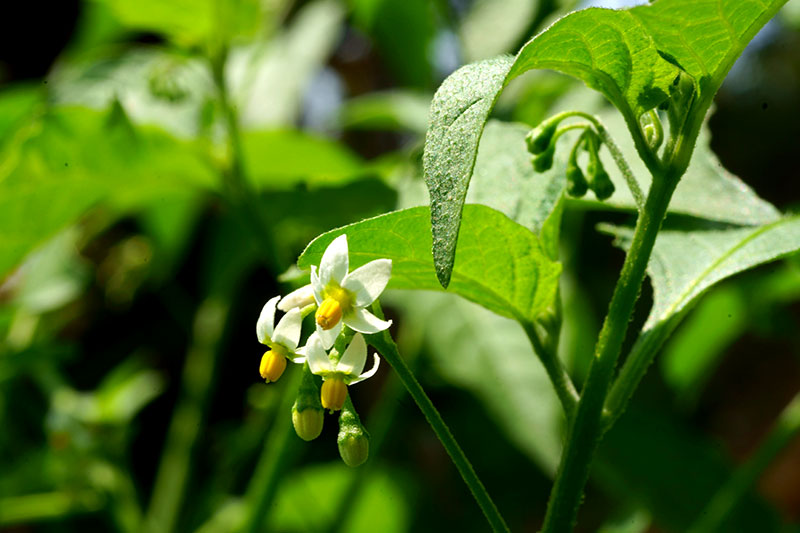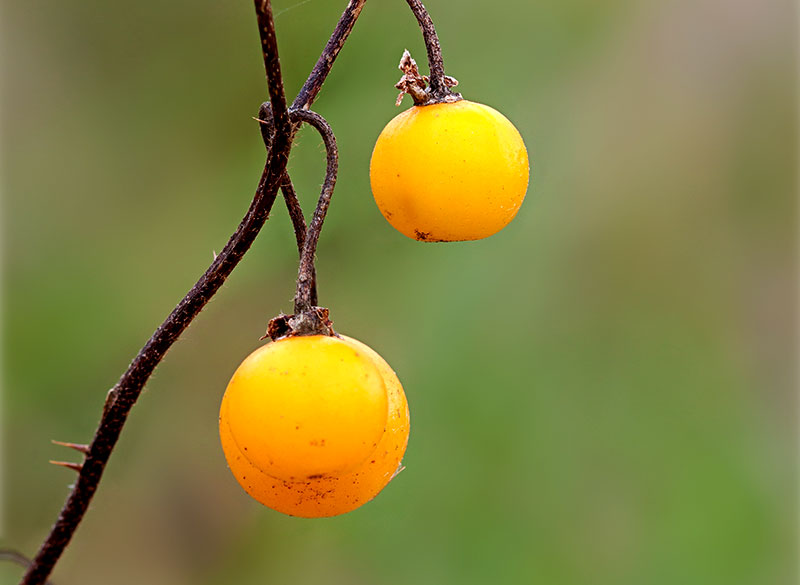
Plants have ways to entice animals to them in order to pollinate or spread their seeds Plants also have ways to fend predators away. Thorns protect roses and cactus. Poison ivy and stinging nettle have chemical irritants that cause swelling, burning and itching of the skin. Many poisonous plants contain horrible-tasting compounds that would make you spit them out immediately. With all these barriers, it’s amazing that some of those fearsome plants are closely related to ones we cultivate and consume on a regular basis. Here are two plants we know and love and their toxic family ties.
Carrots and Poison Hemlock
All across this continent, summer fields sway in the summer breezes with lacy green foliage and delicate white umbrellas made of tiny flower petals of poison hemlock. What a pretty wildflower, tall and sturdy, with little purple spots along its hollow stalks. If you saw these parsley-like leaves in your garden, you’d be happy that your carrots were faring so well and dig up their tasty orange tubers. However, this particular wild cousin is deadly to people and livestock.

Poison hemlock, Conium maculatum, was brought from Europe because of its pretty little flowers, and it has escaped gardens to spread throughout North America. All parts of the plant can cause respiratory failure in humans and livestock, although it is reportedly unpleasant tasting, and animals wouldn’t be prone to eating very much. If hidden among pasture grasses or baled with hay, it would only take a small amount to cause serious problems. Signs of poisoning include loss of appetite, excessive salivation, bloating, rapid but weak pulse and nervousness. Ingestion of less-than-fatal amounts by pregnant animals might result in birth defects such as cleft palate and crooked legs.

Distinguishing characteristics of poison hemlock include the purple splotches on the hairless stems (shown above). A look-alike is Queen Anne’s lace, also called wild carrot, Daucus carota (shown below). The difference is that the stem of Queen Anne’s lace is clearly hairy and does not have purple spots. Our domestic carrot descended from this same plant. The distinctive orange tuber was possibly bred to help tell it apart from the wild ancestor. As an unintended side benefit, the carotenes that make carrots orange also hold a high content of bioavailable vitamin A.

Tomatoes and Deadly Nightshades
Tomatoes are probably the most common plant that beginning gardeners know. Whether a potted plant on a balcony or entwined on rows in a sunny garden, the flowers, leaves and fruit of the domesticated Solanum lycopersicum are ubiquitous for most of the summer. This should also be one of the first plant families that novice wild food foragers should get to know and learn to avoid. Finding a Solanum cousin in the wild does not mean you’ve found an edible plant.
Tomatoes, potatoes and eggplants all belong to the family Solanaceae, also called nightshades, which includes around 2,300 species. These familiar cultivated varieties contain much lower levels of the poisonous alkaloid solanine than wild nightshades. Some of the nightshades found growing wild have medicinal properties, and certain ones are even edible. Yet it would take an expert in plant ID to discern the edible berries of Solanum nigrum, or black nightshade (shown below), from the poisonous berries of the deadly nightshade, Atropa belladonna. Another general rule for beginning foragers: Most fruits that are black or white are not edible.

Many of the wild tomato look-alikes, however, have orange or even slightly red berries that could tempt you but are in fact poisonous. Horse nettle (shown below), for example, produces a pea-sized yellow fleshy berry that looks like a miniature cherry tomato.

Steer clear of all wild tomato look-alikes. You aren’t likely to find the wild ancestor of the cultivated tomato out on a hike, unless that hike takes you to Peru and Ecuador. That’s where the currant tomato (shown below), Solanum pimpinellifolium, still lives, although wild populations are becoming scarce.

Despite the dangers that poison hemlock and deadly nightshade pose, their compounds also hold powerful medicine when prepared properly. Foraging in the wild is a great way to understand plant families better. But when it comes to the carrot and tomato families, it’s safest to eat what you grow closer to home.




